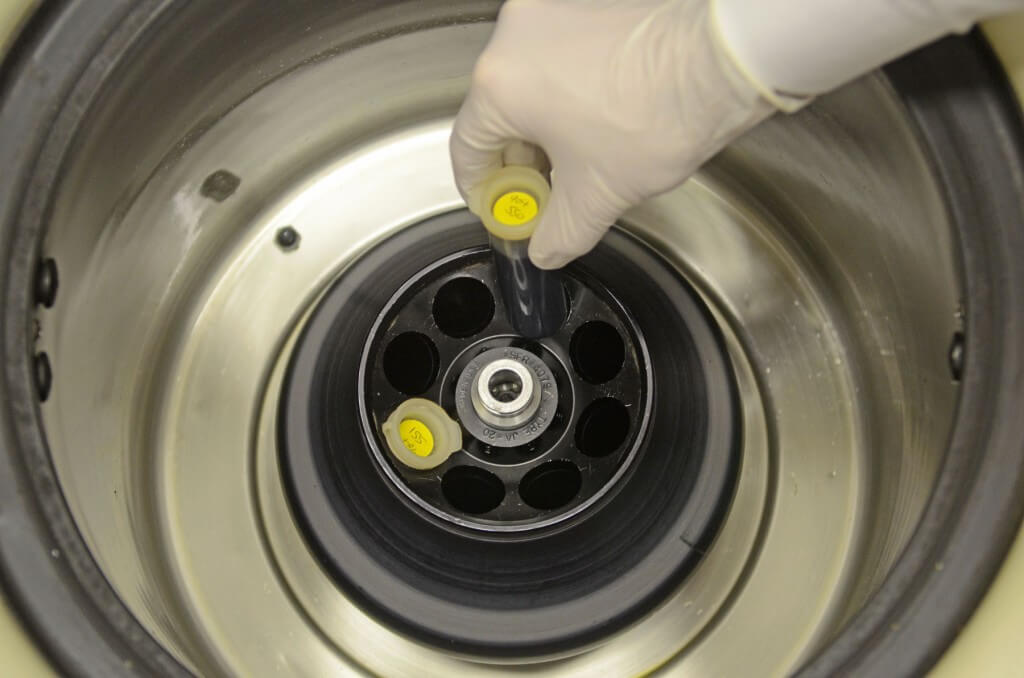Ultra Centrifuge
A small amount of oil in a test tube is run for 30 minutes at 17,000 RPM in an ultra centrifuge. By subjecting the sample to G-forces, the oil-degraded insoluble contaminants that are too small to be detected by normal particle counting or be removed with mechanical filters can be extracted. The density of the agglomerated material is compared to a rating scale to obtain the UC value (1 to 8). When the UC value exceeds 2, a marginal condition is noted. A UC value exceeding 5 is considered to be a critical result.
Operating Principle
A portion of the oil is spun in an ultra centrifuge at 17,000 rpm for a specified time. Varnish molecules tend to be large, and have a higher molecular weight than oil molecules. These large molecules are forced to the bottom of the centrifuge tube where they form a solid deposit. The amount of material deposited is compared to an established rating scale. The larger the deposit, the more likely the system is to experience varnish related issues.
Significance
By monitoring the level of insolubles present in the lube oil informed decisions can be made regarding the implementation of varnish mitigation technology and costly downtime due to varnish related issues can be avoided. Continued testing once varnish mitigation has been implemented can be used to help evaluate the effectiveness of the technology in use.
Applications
Steam turbines, gas turbines, hydraulic systems, compressors, bearing lube systems.


